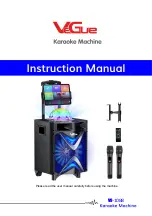
7
■
Secure fastening of the tubes
and pipes at the connection
points must be observed
■
To prevent heat accumulation,
sharp kinks or bends should be
avoided in the tubes
■
Folded spiral-seam tubes should
preferably be used
■
Hot air or plastic tubes should
only be used for straight air
ducting where possible.
■
Plastic tubes must not be
twisted
■
When heating closed rooms
using hot air ducting, back
pressure must not be allowed to
build up.
■
With increased induction
temperature or resistance at
the device air outlet, it is
possible that the forced air oil
burner is switched off briefly by
the temperature monitor (TW).
After reduction of the
temperature the burner will fire
up again automatically!
■
In the case of cycle intervals
that are too short, the length
of the hot air ducting should be
checked.
Electrical connection
■
The electrical connection
of the device must be
performed at a dedicated
supply point with an earth-
leakage circuit breaker in
compliance with VDE
0100 section 55.
■
The power cable required
should be in concordance
with the connected load of the
device and the cable length as
well as the local conditions.
■
Cable extensions must be
suitable and may only be used
if they are completely unrolled
or rolled up.
Hot air diffusion
The device is fitted with a special
high performance radial fan.
This fan is designed to
selectively and effectively transport
the heated air depending upon the
appropriate requirements.
Diffusion of the air is best
performed using pipes or special
hot air or film hoses. The lengths
possible are dependent upon re-
sistance provided by the air
ducting in use.
When using hot air hoses, the
following points must be taken
into consideration:
■
Only use the hot air tubes
approved by us (accessories).
■
The internal overlaps on the
seams of the hot air hoses must
point in the direction of the air
flow.
Fuel supply
An adequate fuel supply must be
maintained on site using appropri-
ately approved safety tanks.
Free flow heating oil must be
available in sufficient supply, also
in the case of low external tem-
peratures. Paraffin formation can
already take place at temperatures
below 5°C.
To avoid this, preventive measures
must be taken such e.g.
winter
proof heating oil, a heated oil
tank, insulated oil pipes etc.
Care should also be taken that the
pipe diameter is suitable for the
total resistance, the suction height
and increased viscosity in the case
of lower oil temperatures.
If required, an oil pump should be
used.
It is essential that the suction pipe
at the base of the tank is fitted
with a foot-operated valve.
It should be noted that perfect
functioning of preheated oil is only
effective when the device has been
supplied with power for a long
period prior to starting up.
It is not possible to remove
paraffin that has already separated
prior to preheating of the oil.
Should paraffin have already
formed, thorough cleaning of the
total fuel system is required.
CAUTION
In the event of accumulated
heat, heating operation will
be continuously interrupted by
the STB!
CAUTION
Cycle operation (running times
of less than 5 mins.) of the
forced air oil burner should be
avoided.






































